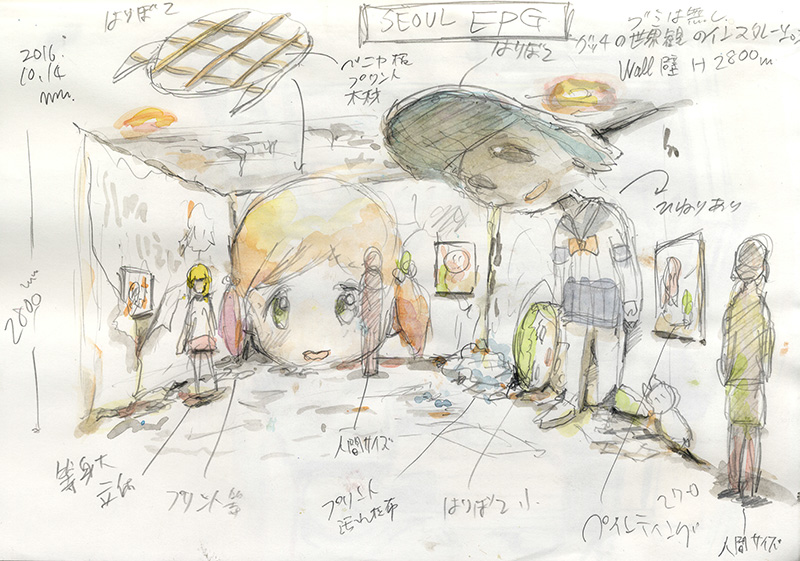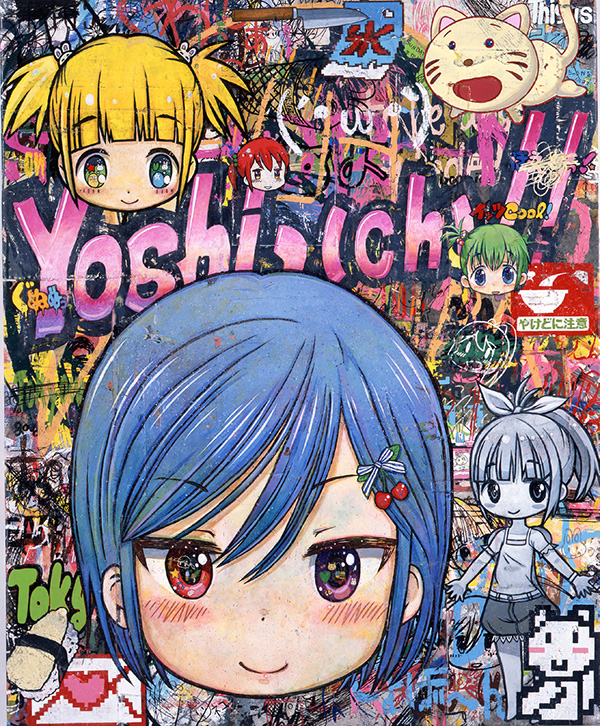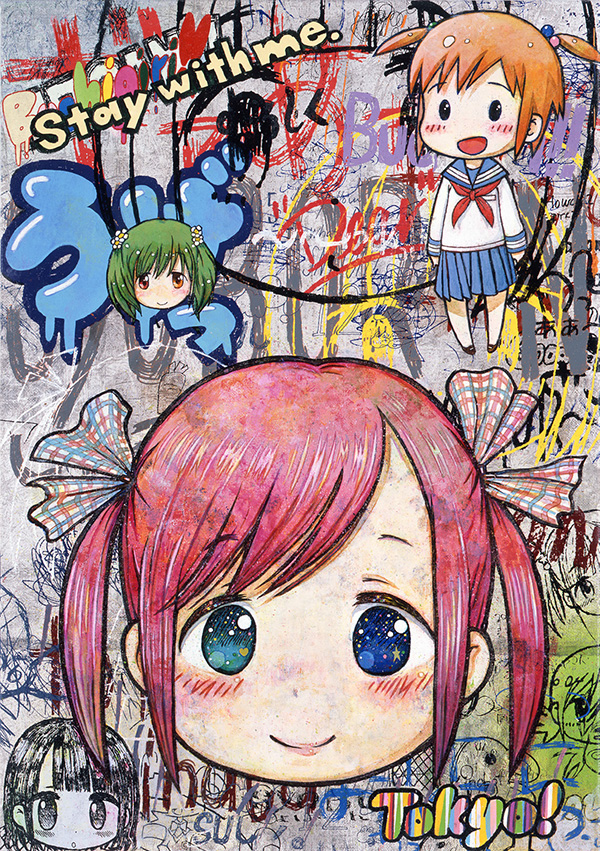ART-PREVIEW:Mr.-Tokyo, the City I know, at Dusk, It’s Like a Hollow in My Heart
 Mr. (Masakatsu Iwamoto) works in a wide range of media, including painting, drawing, video, performance, sculpture, and installation. Having grown up during Japan’s postwar “economic miracle” period, Mr. often exercises his art as a weapon against social expectations. As a member of the otaku subculture, his work ties closely with the lifestyle which is marked by obsessive interests in anime and manga.
Mr. (Masakatsu Iwamoto) works in a wide range of media, including painting, drawing, video, performance, sculpture, and installation. Having grown up during Japan’s postwar “economic miracle” period, Mr. often exercises his art as a weapon against social expectations. As a member of the otaku subculture, his work ties closely with the lifestyle which is marked by obsessive interests in anime and manga.
By Dimitris Lempesis
Photo: Galerie Perrotin Archive
Undoing the stigma of producing paintings or drawings on paper in an anime style, Mr. says “I definitely see no point in mimicking the style of western artists. Instead, I choose my Asian, Japanese, capitalist, born-after-the-war, every-day self as my starting point”. For “Tokyo, the City I know, at Dusk: It’s Like a Hollow in My Heart”, Mr.’ solo exhibition at Galerie Perrotin in Seoul, the entire space has been transformed into an immersive environment, with the artist’s new works interspersed throughout to activate the space. In the installation, against the backdrop of Tokyo at dusk, large cutouts of young girls’ heads are sprawled across the disheveled and deteriorated room as if a tsunami had swept through. The installation’s visual rhetoric is underpinned by the context of post-war Japan which has experienced a slew of disasters, starting with the big loss in WWII leading up to the tsunami and earthquake that devastated the country in 2011. Standing in contrast to this nvironment is a life-size statue of a young girl whose school uniform epitomizes her inherent purity and naiveté. Embodying the essence of moe (an intense attraction towards idealized characters appearing in anime and manga) the statue characterizes the artist’s self-professed otaku identity. On either side of the statue is a series of paintings depicting bright, energetic girls. The birth of Mr.’s manga-style characters are also rooted in the psychological trauma inflicted from modern-day adversity, whether natural disaster, war or social anxiety, in addition to his obsession with the otaku culture (the term otaku first appeared in a 1983 essay by Akio Nakamori in the manga magazine Manga Burikko). Following the WWII that left Japan in a state of uncertainty, anime and otaku culture proliferated. They are characterized by innocent, untainted young girls and boys as main characters who go on an adventure and successfully achieve their mission in the end.
Info: Gallerie Perrotin, 1F 5 Palpan-Gil, Jongno, Seoul, Duration: 15/12/16-18/2/17, Days & Hours: Tue-Sat 10:00-18:00, www.perrotin.com


